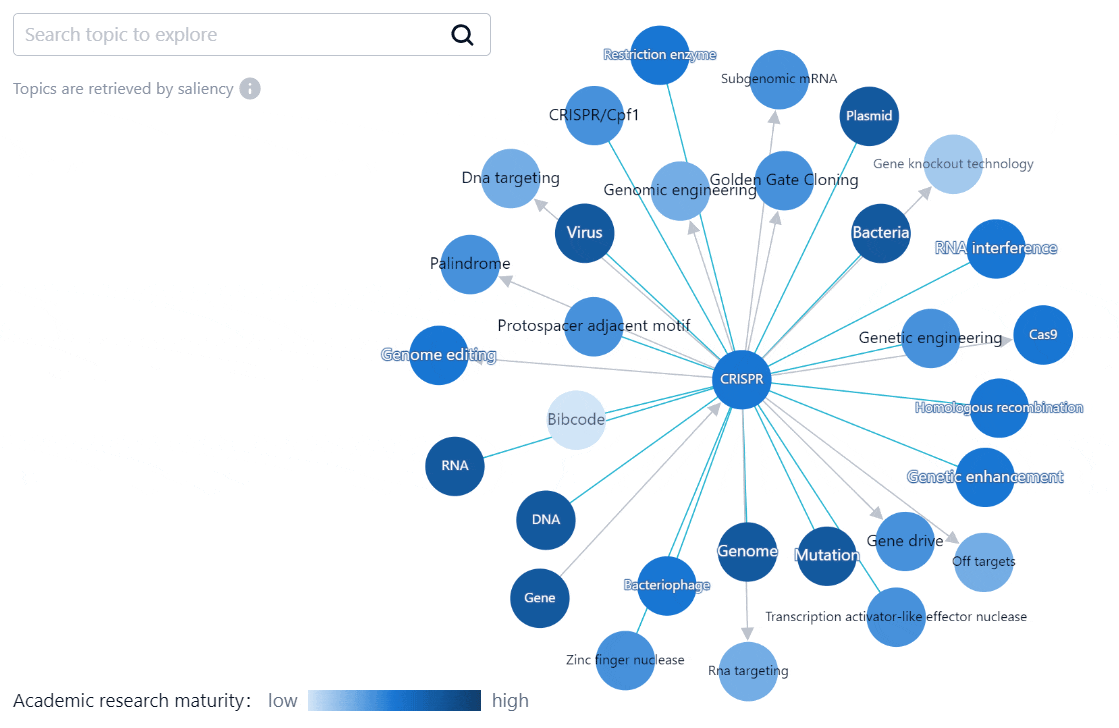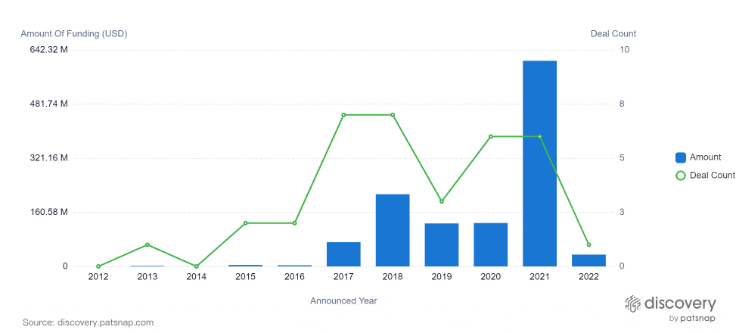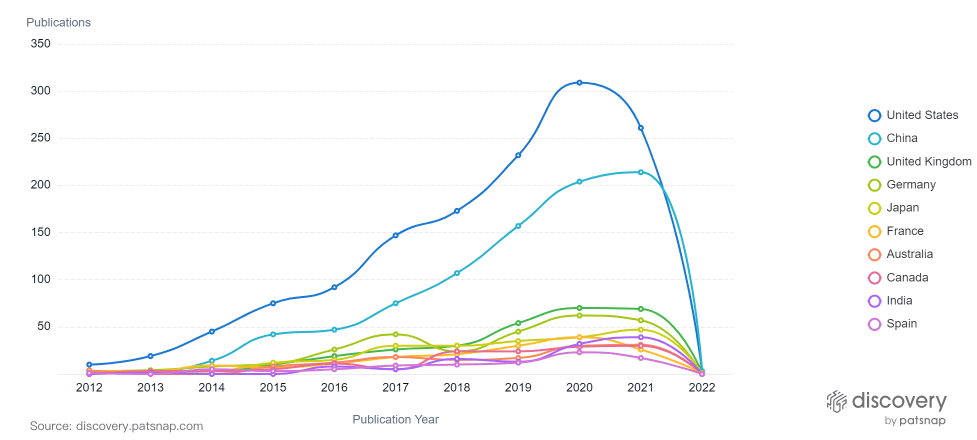7 Innovations Driving CRISPR Technology Forward
What can’t CRISPR-Cas9 technology do? In this article, we explore 7 unique applications of this Nobel Prize-winning technology.
Want the latest in-depth analysis of how the CRISPR market is developing? Download PatSnap’s exclusive new report.
The applications of CRISPR technology are seemingly endless, with recent breakthroughs including a successful xenotransplantation of a gene-edited pig heart into a human,* treatment of blood diseases such as sickle cell anemia, as well as improved agriculture and crop resilience.
CRISPR, short for Clustered Regularly Interspaced Short Palindromic Repeats, is a component of the immune systems of bacteria, which can cut and edit DNA. Think of it as a pair of molecular scissors that can target and cut a DNA sequence, as directed by a customizable guide. It allows scientists to rewrite the genetic code in almost any organism, while being cheaper, simpler, and more precise than any of its gene-editing predecessors. However, there are many other, somewhat unusual, applications for CRISPR being researched as well.
In this article we explore seven unique applications of this Nobel Prize-winning technology.

Topics and related subjects retrieved by saliency to CRISPR, measured by total paper count and citation count – darker circles representing more developed topics.
1. Decaffeinated Coffee
Coffee aficionados will tell you; decaf just doesn’t cut it. While it may not give you that wide awake feeling, nor keep you up all night, it doesn’t have the flavor profile of “real” coffee. To remove caffeine, roasters must put the coffee beans through a complex chemical process that often leaves trace chemicals and deteriorates the beans complex aromas and tastes.
While a few naturally occurring caffeine-free coffee plants have been found, there has been minimal success with them. So, plant scientists have turned to gene editing for a breakthrough.
Tropic Biosciences, using CRISPR, has had success simply “turning off” the caffeine production genes of the coffee plant. This removes the need for the expensive, wasteful, and polluting decaffeination processes. CEO, Gilad Gershon, believes that their caffeine-free coffee, which hopes to be on the market within a few years, is a “gateway to bigger opportunities” to breeding climate-resilient coffee plants, which they have already started developing. Coffee lovers rejoice!
2. Spicy Tomatoes
The humble tomato is often described as being sweet, juicy, and acidic. Soon, spicy may be added to this list, as a team of scientists in Brazil hopes to genetically engineer tomatoes… with a “kick.”
Chili peppers and tomatoes diverged from a common ancestor millions of years ago, however tomatoes still possess the genetic material needed to make capsaicinoids – the molecule that make chilis spicy. The researchers in Brazil believe that with gene-editing tools like CRISPR they can activate these dormant capsaicinoid genes, providing an economic substitute to traditional peppers, which are notoriously difficult to grow. Mamma Mia, that’s exciting.

The CRISPR Crops industry reached a record high for investments in 2021, totaling over $600M.
3. No Hangover Wine
Ever wish you could spend a night out on the town without suffering the consequences of a head-splitting hangover the next day? You may be in luck; a team of researchers at the University of Illinois have genetically modified the yeast used to ferment wine, increasing a compound called resveratrol, thereby decreasing your hangover.
The yeast in question, Saccharomyces cerevisiae, has many copies of each of its genes, making it highly adaptable and very difficult to genetically engineer with older methods. With CRISPR, genetic engineers were able to cut every copy of a desired gene in one go, boosting the amount of resveratrol in their wine, leaving those head-splitting hangovers in the dust.
4. Pest Eradication
What if we lived in a world with no more malaria-spreading mosquitoes? This scenario is possible with CRISPR. The gene-editing technology can be used to help control the number of species transmitting an infectious disease or invading a particular ecosystem. This is done through the creation of “gene drivers,” which ensure a genetic modification will be inherited by all offspring, spreading through the population over many generations.
Researchers at Imperial College London proved that this technology could be used specifically against the species of mosquito responsible for the spread of malaria. Using CRISPR they introduced a gene, such that when both parents carry it, it stops the females from laying eggs. In a caged trial, the population was eradicated as early as 7 generations after the introduction of the gene.
Around the world, researchers are planning to test this approach on other troubling species, including invasive rats, and feral cats in Australia. However, there is still controversy surrounding the ethical considerations that come with the use of these “gene drivers.”

Research on CRISPR edited species has been increasing over the past decade, with the United States and China being the top publishers in the space.
5. Allergy Free Foods
Ten percent of adults and eight percent of children in the United States have food allergies. And these numbers are increasing at an alarming rate. Dubbed “the big eight” there exist a group of plants including wheat, soybeans, and peanuts, which are known to cause 90% of food allergies. Food allergies occur when the immune system recognizes a protein as foreign, triggering an immune response — with rare cases being fatal. To alleviate this problem, scientists are genetically modifying plants to produce fewer allergens.
Researchers in South Carolina have been working to reduce the gluten content of wheat to make it more digestible for those with celiac disease or gluten sensitivities. They believe improving the food to help with these ailments is an easier fix than finding medicines or treatments to help. IngateyGen, a food tech company in North Carolina is tackling a similar battle, working to develop a hypoallergenic peanut. Using CRISPR these researchers are working to remove the top allergenic proteins in these crops, in hopes of developing plants that are as close to allergen-free as possible, allowing people to enjoy their meals stress- and allergy-free.
6. Faster Racehorses
Let’s go to the races… but with better, faster, genetically engineered horses? Researchers have discovered that different versions of the myostatin gene, an inhibitor of skeletal muscle growth, almost solely accounts for gene-based race distance propensity in horses – essentially, it’s their “speed gene.”
Argentinian Kheiron-Biotech is using CRISPR to edit the genome of racehorses making breeds that are faster, stronger, and better jumpers. They have had success removing the myostatin gene with 96.2% efficacy and have since successfully created horse embryos with this edit. Long-term, they hope to identify more alleles that give a horse a natural advantage, and then incorporate these together, allowing other horses to have the same speedy benefits.
7. De-extinction?
Can we bring species back from the dead? This is perhaps one of the most unique (albeit a little bit creepy) uses of CRISPR to date. Right now, there is serious talk around resurrecting the passenger pigeon.
Passenger pigeons use to roam the forests of North America in flocks of hundreds of millions, however in the 18th and 19th century this changed. They were mass hunted by hungry Euro-Americans, driving the species into a steep decline during the early 20th century, with the last known passenger pigeon dying in captivity in 1914.
California Biotech, Revive and Restore, has started a dedicated passenger pigeon project, aiming to re-establish the species by modifying the genome of the closely related band-tailed pigeon. If successful, they believe they could use this approach to resurrect many kinds of extinct or even critically endangered species. Now the question of whether or not they should is still up for debate – but there is no denying that it would be pretty cool to see a real life, living woolly mammoth.
As research on CRISPR continues and develops further, many aspects of life as we know it may be altered. From medicine, to pets, to our foods – there is room for improvement, and genetic engineering is ready to jump in. Safe to say CRISPR is, or soon will be, achieving the impossible, and even making what was once thought to be science fiction seem possible.
*The man who successfully received the first genetically modified pig heart has passed away, two months post-op.
While it’s still not clear what caused his death (an investigation is pending) the results will help researchers understand how close we are to solving the organ shortage crisis via xenotransplantation.